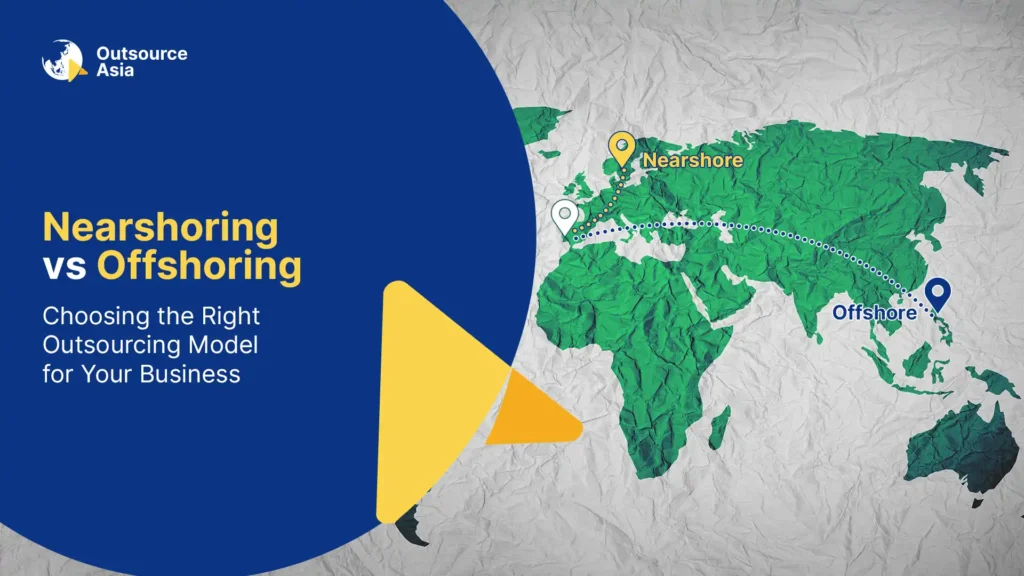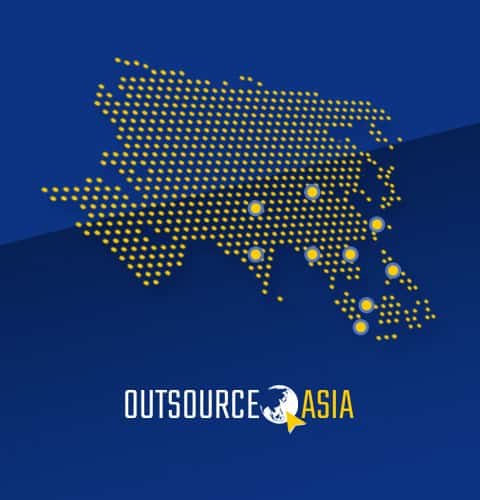In today’s interconnected world, businesses are increasingly looking beyond domestic borders to expand operations and reduce costs. As companies strive to enhance productivity and tap into global resources, deciding on the Right Outsourcing Model—whether it be nearshoring or offshoring—becomes a critical decision. While both involve relocating business activities to foreign countries, understanding the key differences between them will help businesses make an informed choice aligned with their goals. Choosing the Right Outsourcing Model ensures that companies can optimize efficiency, reduce expenses, and maintain competitive advantage in a globalized market.
What is Nearshoring?
Nearshoring refers to outsourcing services to a neighboring country or a region close to your business’s home base. Instead of sending operations to distant locations, nearshoring connects companies with service providers in countries that share similar time zones, cultural affinities, and geographical proximity. This model is particularly popular for businesses seeking cost-effective solutions without compromising communication and collaboration.
For more insights on nearshoring, check out this comprehensive guide by McKinsey & Company.
Common Examples of Nearshoring:
- Software Development: A U.S.-based tech company may choose to nearshore software development to Canada or Mexico for a smoother collaboration experience.
- Customer Support: European companies may nearshore customer support services to Eastern Europe to leverage skilled labor at a lower cost.
- Creative Services: Marketing agencies in the UK might nearshore creative production to Ireland, benefiting from a culturally similar workforce.
Learn more about nearshoring examples from Deloitte’s outsourcing trends report.
Benefits of Nearshoring:
- Proximity and Time Zone Alignment: Nearshoring reduces time zone differences, making real-time communication easier and enabling quick responses to urgent issues.
- Cultural Similarities: Working with neighboring countries often means less cultural friction and smoother collaboration, as teams are likely to share similar values and work ethics.
- Lower Costs: Nearshoring typically offers a more affordable alternative to domestic outsourcing without sacrificing quality.
For a deeper dive into the benefits of nearshoring, visit Harvard Business Review.
Potential Drawbacks of Nearshoring:
- Limited Talent Pool: Depending on the industry, the nearby region might have fewer specialized professionals, which can impact scalability.
- Language Barriers: While many nearshore countries share a common language, differences in dialects or accents can still present communication challenges.
- Higher Costs Compared to Offshoring: While more cost-effective than onshore options, nearshoring may still be pricier than offshoring to regions with lower labor costs.
What is Offshoring?
Offshoring involves outsourcing business functions to countries that are geographically distant. Typically, companies use this model to take advantage of lower labor costs, access a broader talent pool, and leverage specific expertise found in offshore locations. Whether it’s establishing relationships with third-party providers or managing remote teams, offshoring is a popular strategy for businesses looking to reduce expenses and scale operations quickly.
Common Examples of Offshoring:
- Manufacturing: U.S.-based companies often offshore manufacturing operations to countries like China, India, or Vietnam to take advantage of lower labor costs.
- Call Centers: Many global tech companies outsource their customer support to countries such as India or the Philippines, where English-speaking professionals are abundant.
- Video Editing: Offshore video editing tasks to regions with skilled workers, like India, the Philippines, or South Africa, to access cost-effective services.
Benefits of Offshoring:
- Cost Efficiency: Offshoring can provide significant cost savings by leveraging lower labor costs in offshore countries.
- Access to a Larger Talent Pool: Offshoring opens opportunities to work with experts in niche fields or specialized skills that may not be available in the home country.
- Scalability and Flexibility: With offshore teams, businesses can quickly scale operations up or down based on market needs, offering enhanced flexibility.
Potential Drawbacks of Offshoring:
- Cultural Differences: Larger cultural gaps between teams can lead to communication issues and misunderstandings, especially when working with teams from vastly different countries.
- Language Barriers: Even if English is commonly used, accents, idioms, and communication nuances can present challenges.
- Time Zone Differences: Significant time zone gaps can hinder real-time collaboration, requiring careful coordination to manage workflow efficiently.
Nearshoring vs. Offshoring: Which Is the Right Outsourcing Model?
When deciding between nearshoring and offshoring, it’s essential to consider your company’s specific needs, goals, and operational challenges. Both models offer distinct advantages and come with unique hurdles.
- Choose Nearshoring if you value real-time collaboration, cultural similarities, and smoother communication. Nearshoring is ideal if you seek a solution where your remote team works like an extension of your in-house team, without the complications of large time zone differences.
- Choose Offshoring if cost reduction is your primary objective and you’re comfortable navigating cultural and communication barriers. Offshoring is perfect for businesses looking to tap into a global talent pool, especially in specialized fields where expertise may be scarce locally.
Ultimately, the choice between nearshoring and offshoring should align with your business priorities. By weighing the benefits and drawbacks of each model, you can select the strategy that best supports your business’s long-term growth and operational efficiency.
Ready to Choose the Right Outsourcing Model for Your Business?
Contact Outsource Asia today to discover how we can help your business thrive with customized, AI-driven outsourcing solutions.



